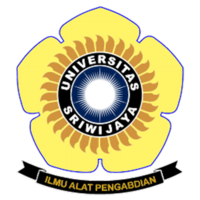Potensi Pupuk Hayati dalam Optimalisasi Pertumbuhan Tanaman Jagung di Tanah Gambut Cekaman Kekeringan
Abstract
Lumbantoruan SM, Anggraini S, Siaga E. 2021. Potential of biofertilizer in optimizing corn growth in drought stress of peatlands. In: Herlinda S et al. (Eds.), Prosiding Seminar Nasional Lahan Suboptimal ke-9 Tahun 2021, Palembang 20 Oktober 2021. pp. 162-171. Palembang: Penerbit & Percetakan Universitas Sriwijaya (UNSRI).
Peatland is suboptimal land which has high potential to be used as agricultural, but the potential of this peat soil has challenges that are not easy to manage in a sustainable manner. Incorrect management can result in peatlands experiencing drought stress. A technological approach that can be used to optimize the use of peat soil that is experiencing drought stress in maize can be done by applying biological fertilizers. The results of this study are expected to optimize the growth of maize in drought stress peat soils. The design used in this study was a completely randomized block design with 2 treatment factors, namely the first treatment factor for biological fertilizers, namely H0: without mycorrhizae, H1: Mycorrhizae + Petrobio, H2: Mycorrhiza + Agrozeabiochar, H3: Mycorrhizae + Pugam. The second treatment factor was the intensity of watering, namely P1: Watering once a day, P2: Watering once in 3 days, P3: Watering once in 5 days, P4: Watering once in 7 days. The results showed that the application of biological fertilizers was able to increase the average plant height, stem diameter, and root length. Biofertilizer Micoriza + Petrobio was able to increase plant height by 11.7 cm and biological fertilizer Micoriza + Pugam (H3) was able to increase stem diameter by 1.3 and root length by 115.7 in drought stress peat soil compared to control.
Keywords
Full Text:
PDFArticle Metrics
Abstract view : 992 timesPDF - 1427 times
Refbacks
- There are currently no refbacks.

